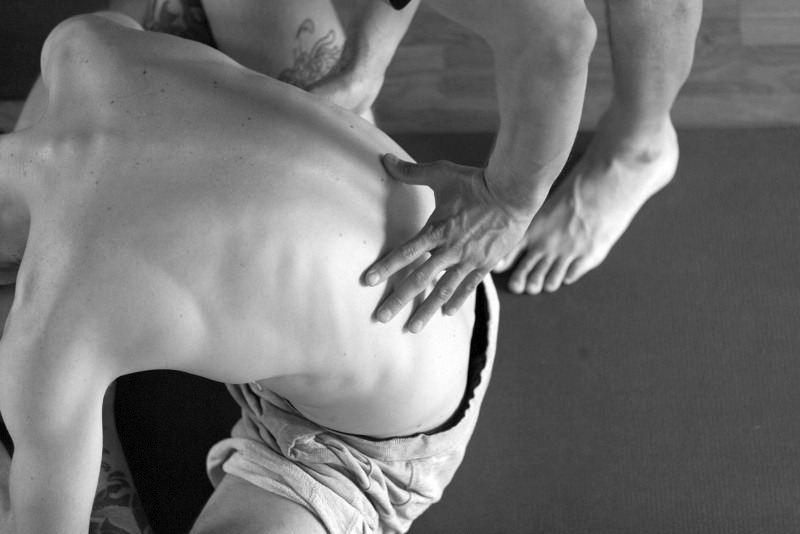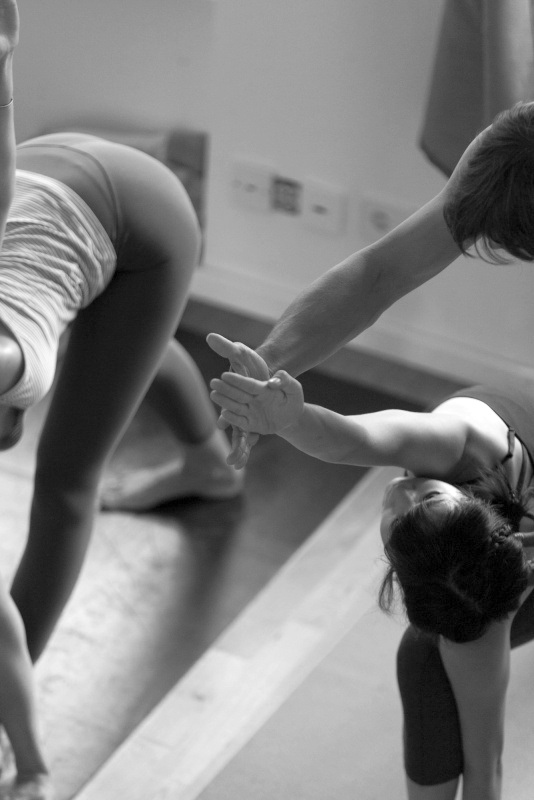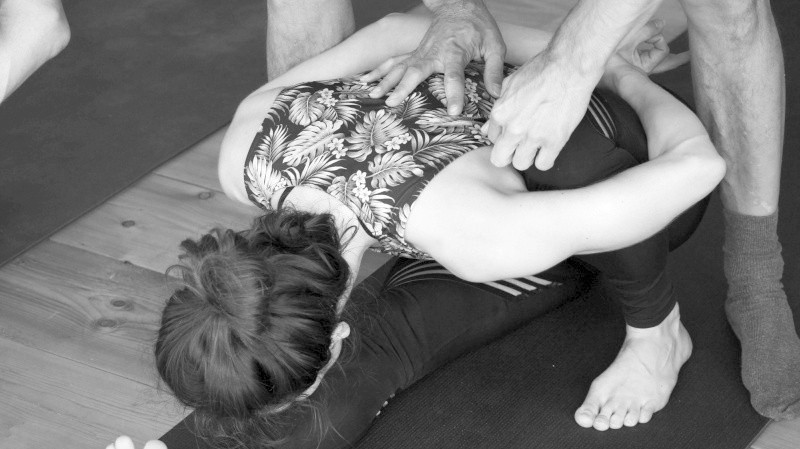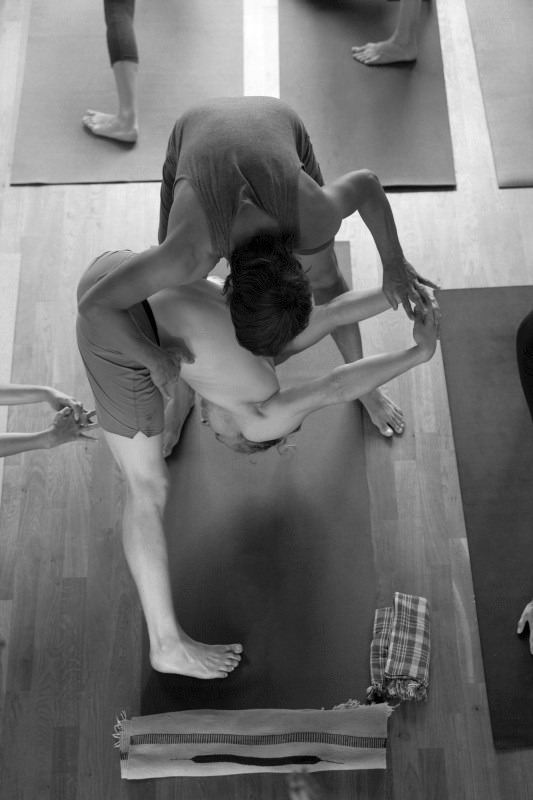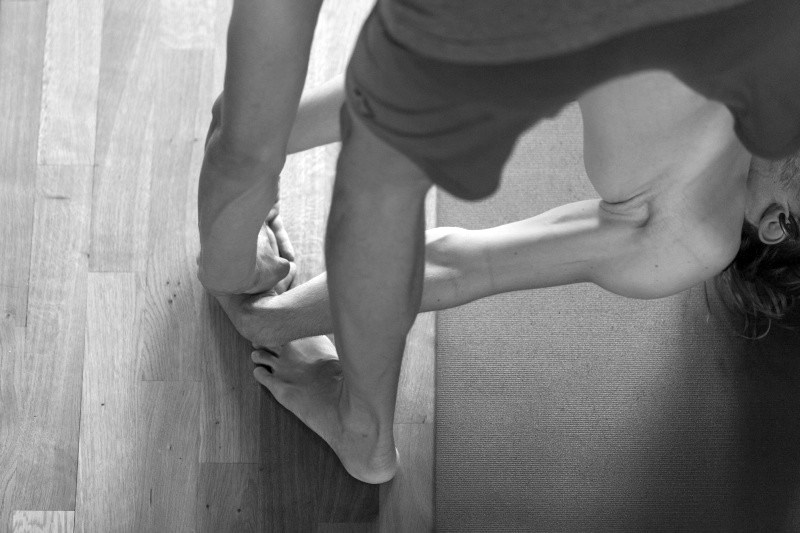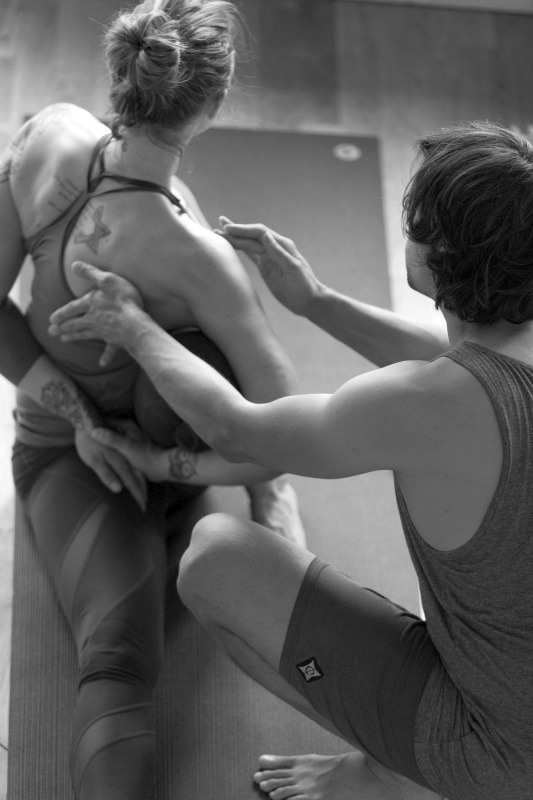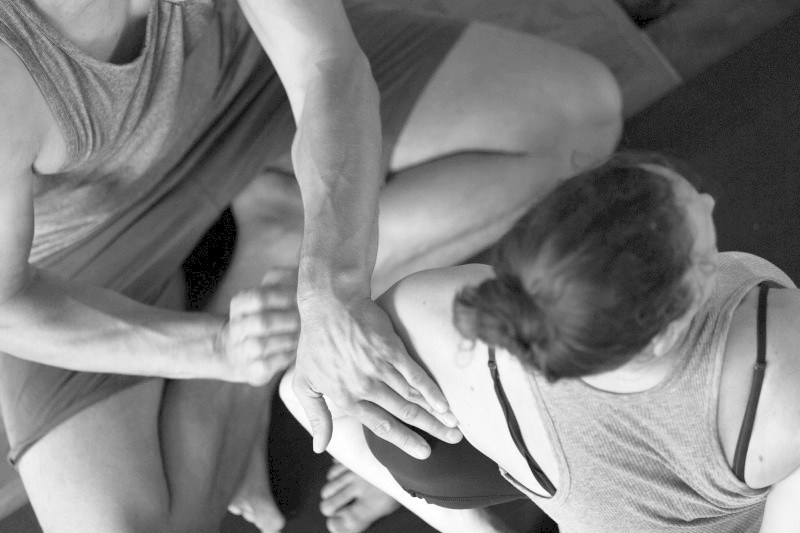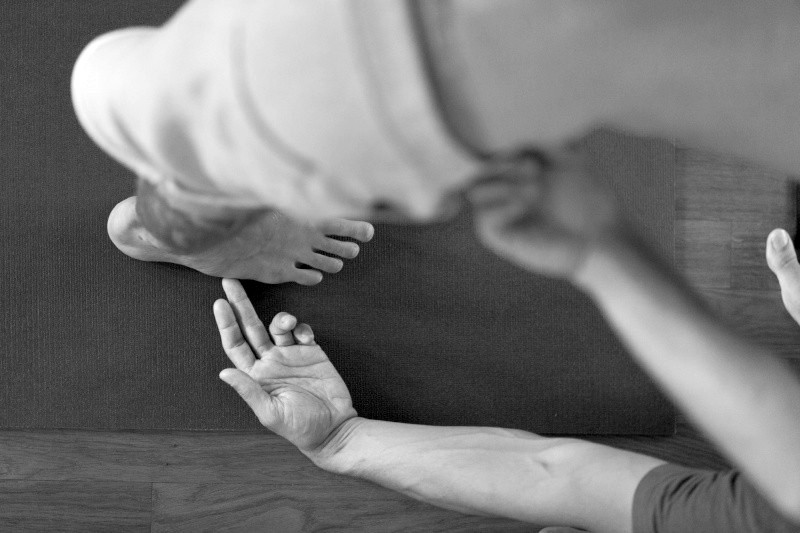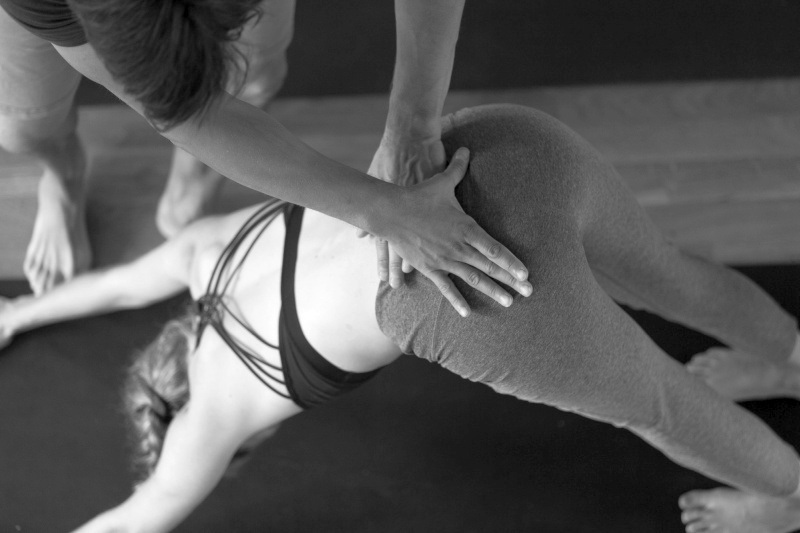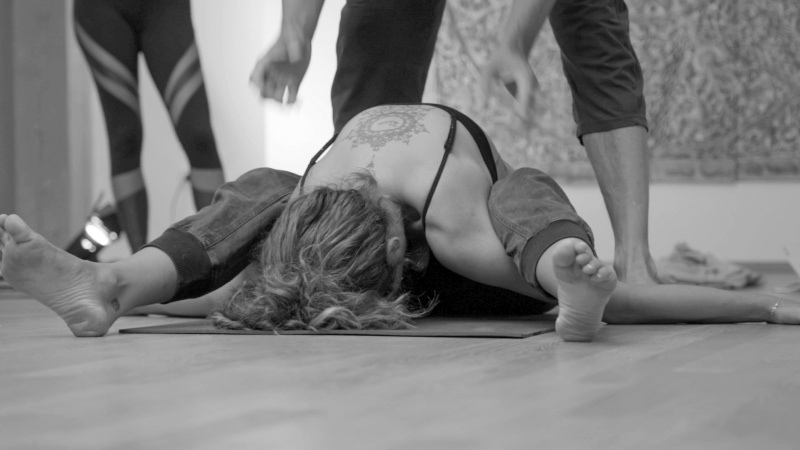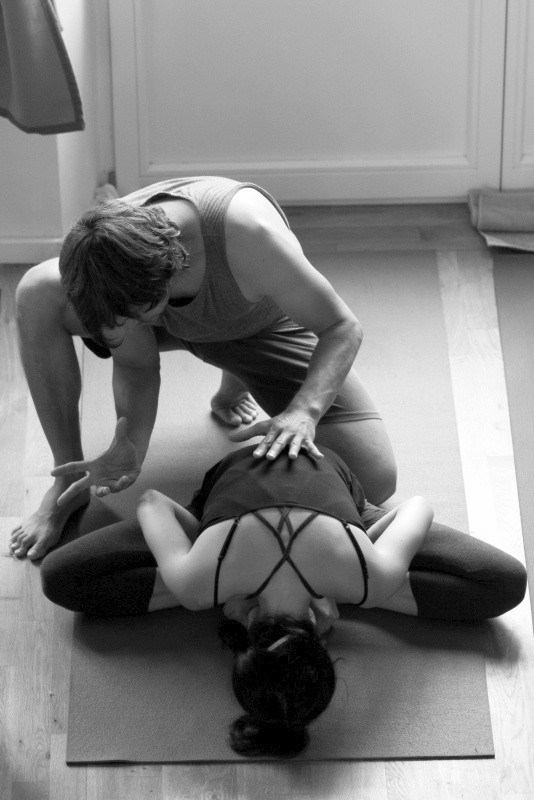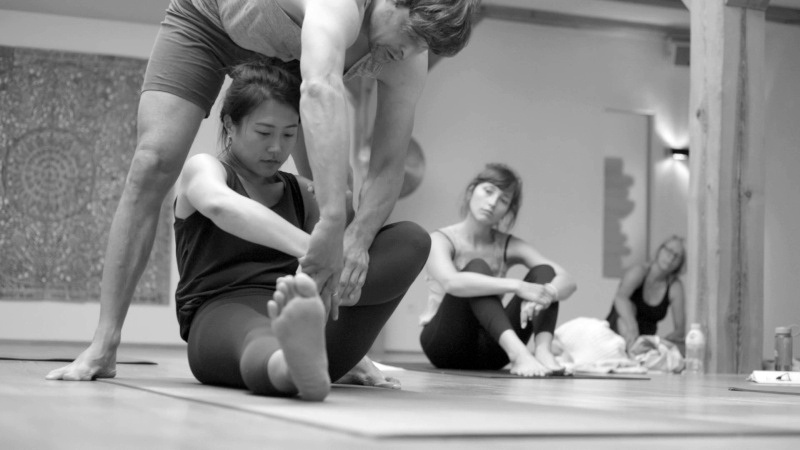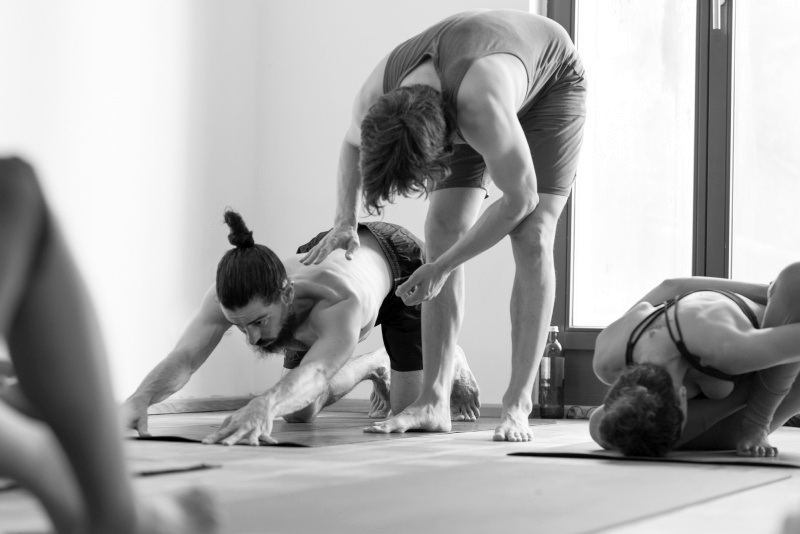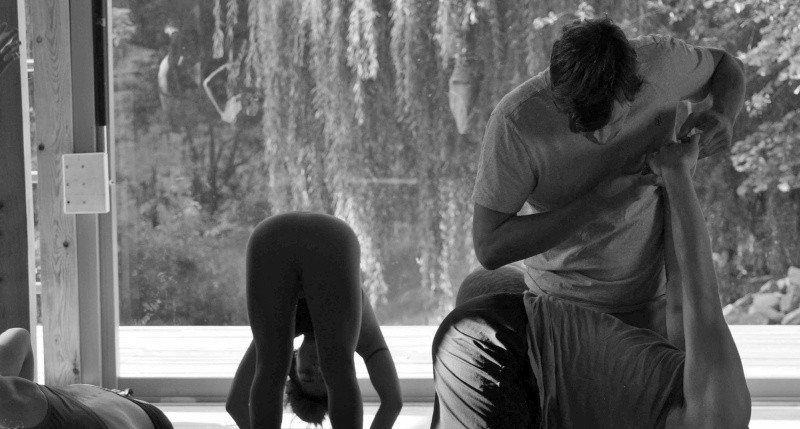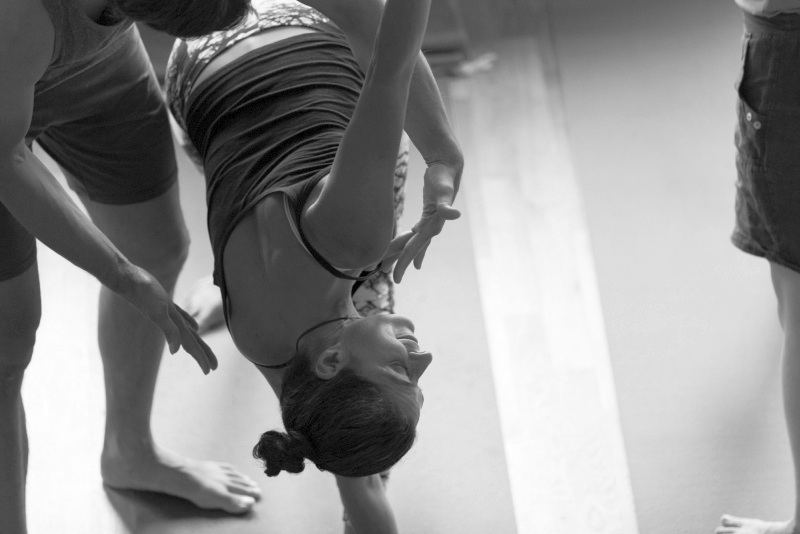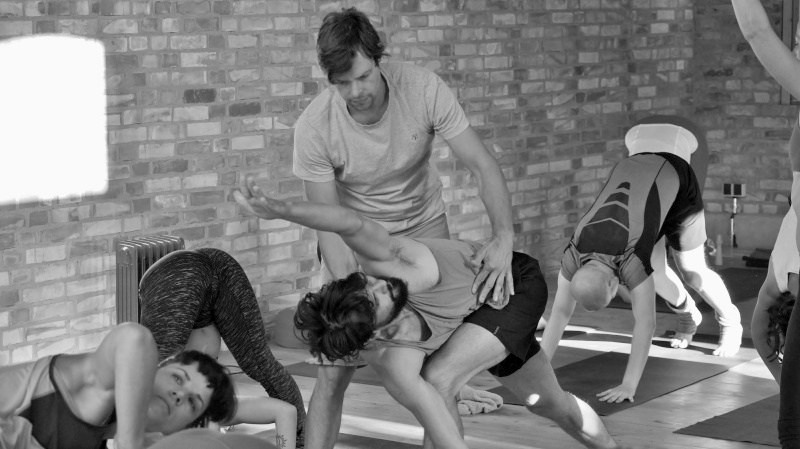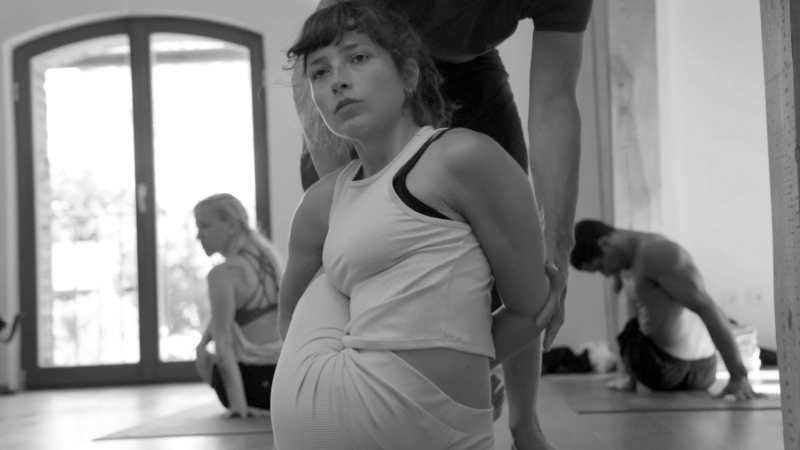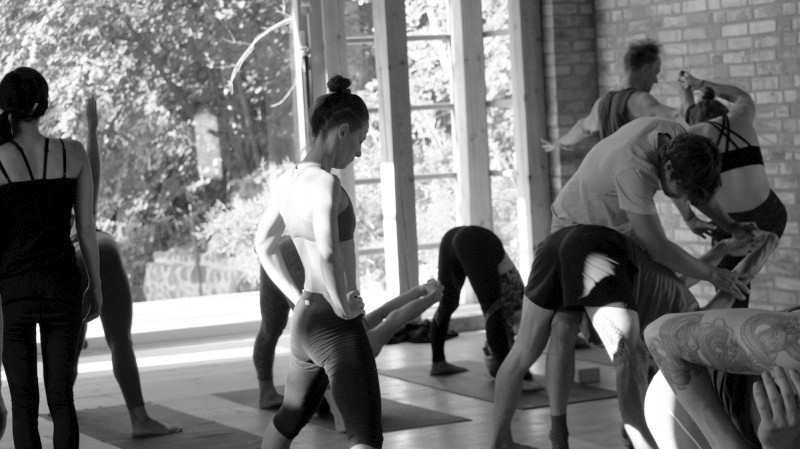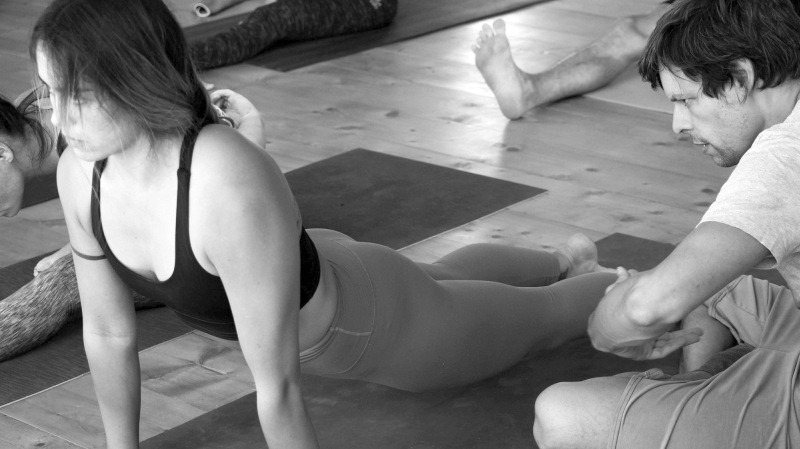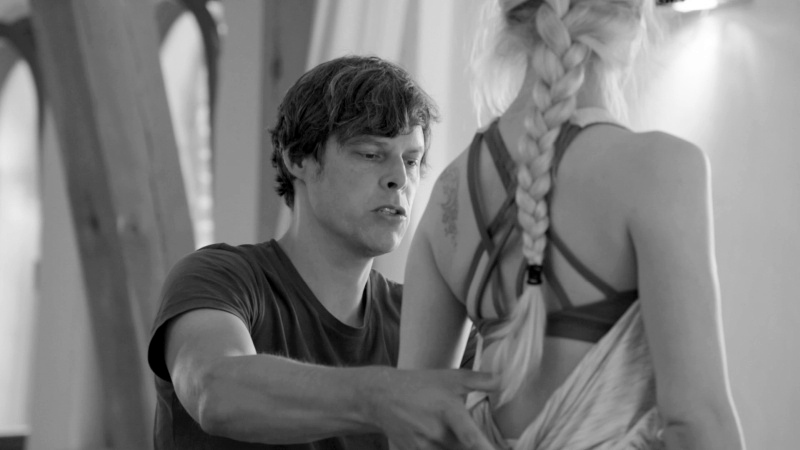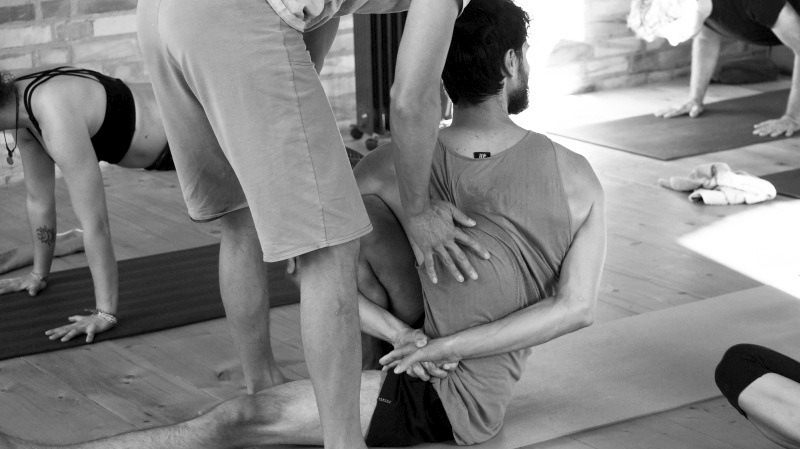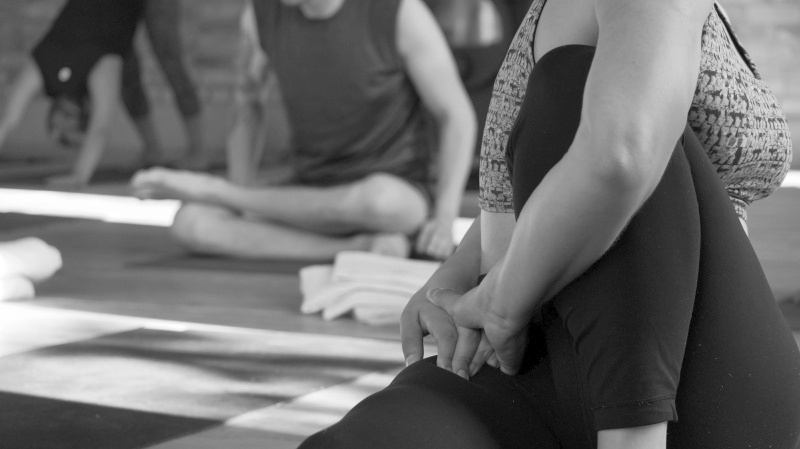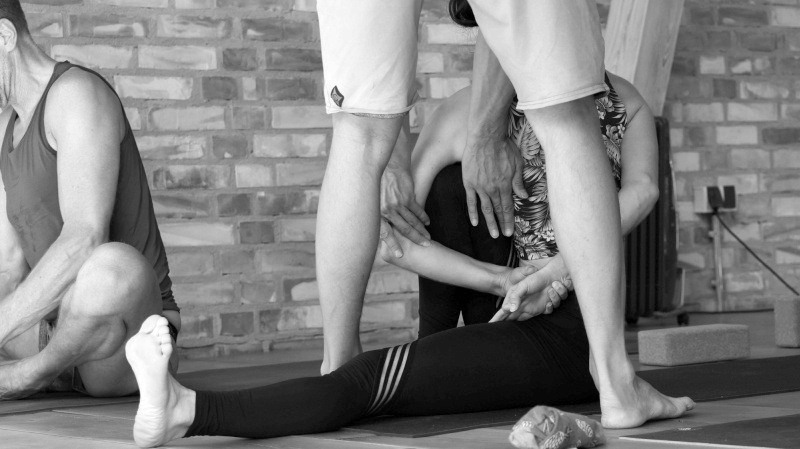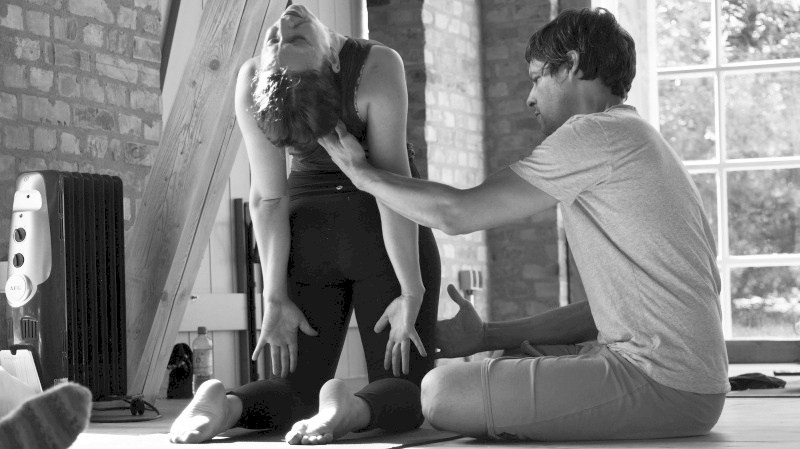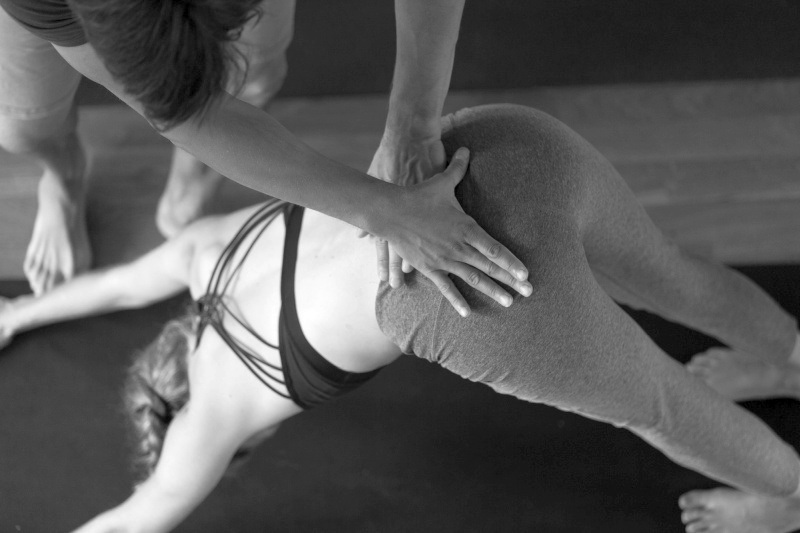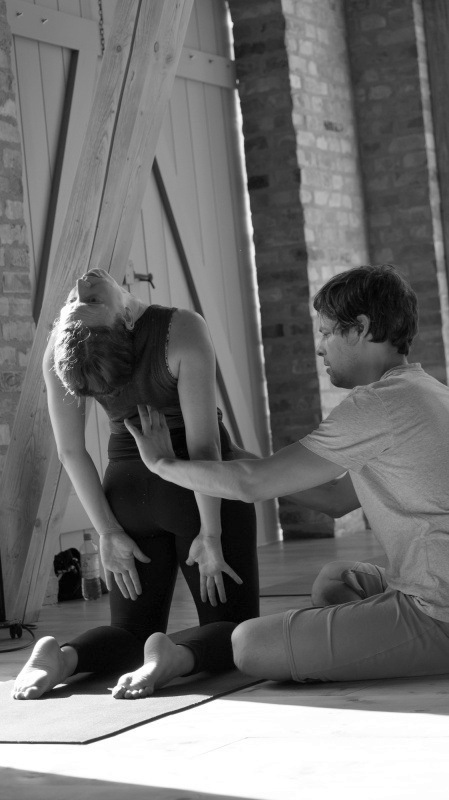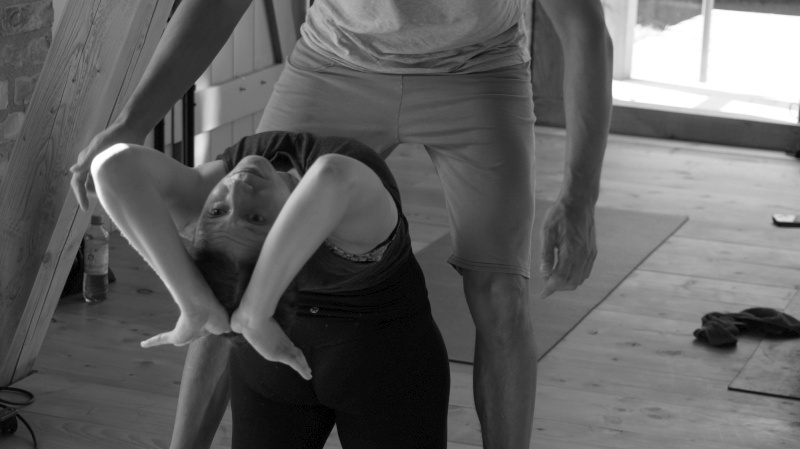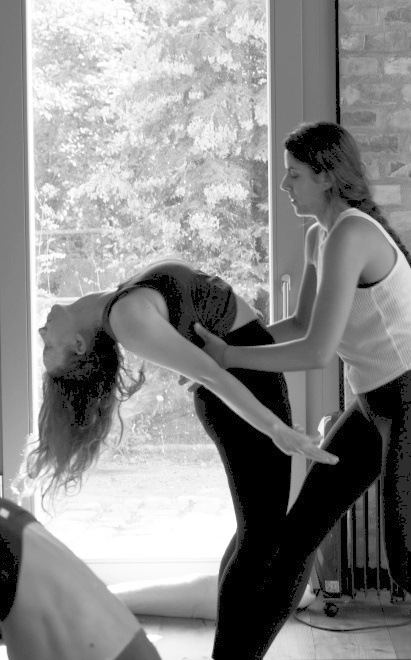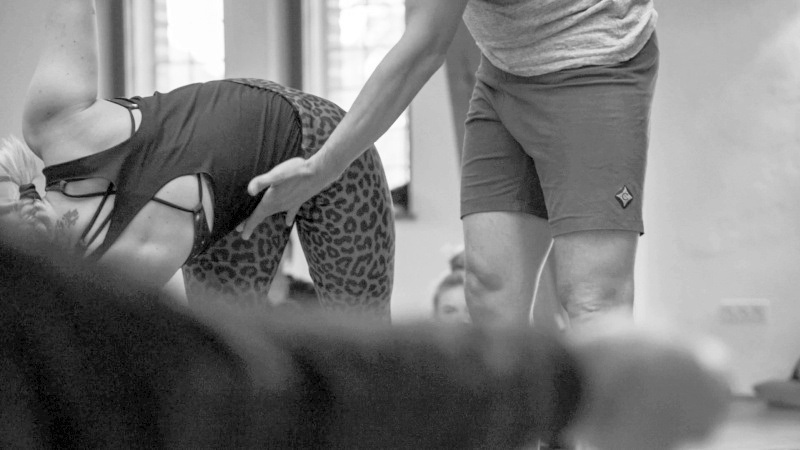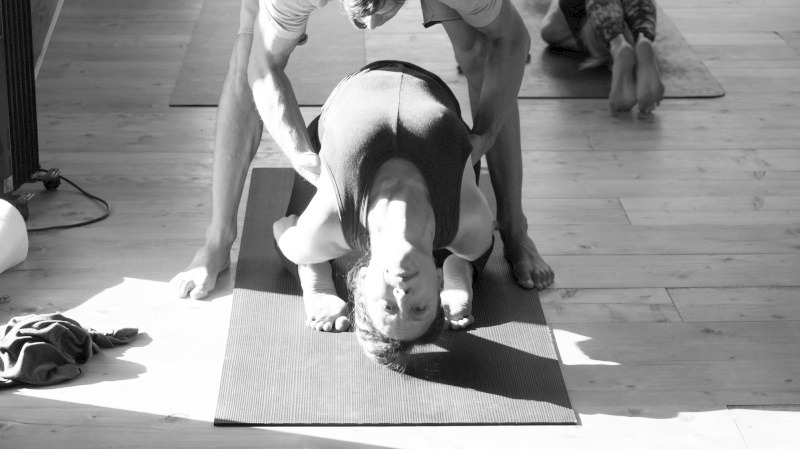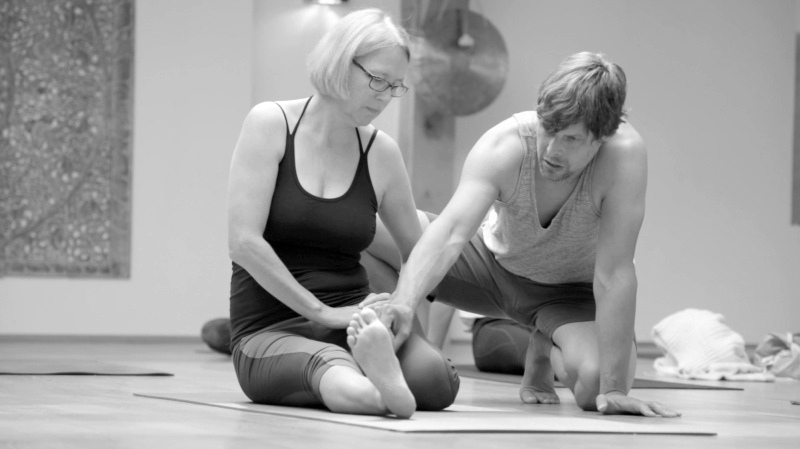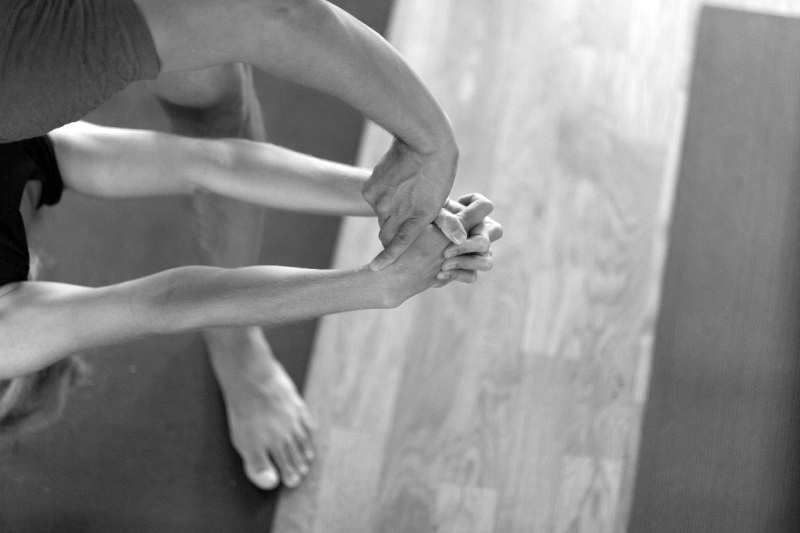What is the Mysore Style teaching paradigm?
Was ist die "Mysore Style" Unterrichtmethode?
Mysore Style ist das traditionelle Yoga
Mysore Style is the traditional yoga
Vorteile von Mysore-Style gegenüber Frontal-Unterricht
Die traditionelle Yogaunterrichtsweise ("Mysore Style") hat für Schüler ausschließlich Vorteile gegenüber dem westlichen Frontalunterricht. Das können wir so klar sagen, weil wir beides kennen. :)
- Individuelle Anleitung: Im traditionellen Ashtanga Mysore-Style bekommst Du individuelle Anleitung und Aufmerksamkeit, die genau auf deine Bedürfnisse und Fähigkeiten zugeschnitten ist. Anders als bei westlichen Frontal-Yogakursen, wo alle die gleichen Anweisungen hören.
- Systematik: Die Ashtangamethodik ist systematisch. Sämtliche Komponenten der Ashtangapraxis und die Unterrichtsweise entfalten sich über viele Jahre. Sie werden seit Jahrzehnten oder womöglich Jahrhunderten erprobt und systematisiert. In westlichem Yoga gibt es keine Reproduzierbarkeit.
- Beherrschung der Praxis: Im traditionellen Ashtanga Mysore-Style lernst du systematische und gut konstruierte Serien von Posen, die du in deinem eigenen Tempo praktizierst. Schritt für Schritt lernst du die Sequenzen auswendig und verstehst jede Pose immer besser, wodurch du flüssiger und verinnerlichter durch die Praxis kommst.
- Selbständigkeit: Dadurch wirst Du im Ashtanga vom ersten Tag unabhängig. Frontalunterricht macht Schüler abhängig und unselbständig.
- Atemarbeit: In der Ashtanga-Methode gibt der Atem den Takt vor. Pranayama ist systematisch mit der Praxis verwoben. Der Unterschied ist dramatisch.
- Flexibilität und Kraft: Die Ashtanga Mysore-Praxis ist körperlich anspruchsvoll und erfordert sowohl Kraft als auch Flexibilität. Alles, was du dafür brauchst, ist regelmäßige Übung. Der Rest ist Methode.
- Verbindung zwischen Körper und Geist: Mit Ashtanga entwickelst du eine tiefere Verbindung zwischen Körper und Geist. Indem du dich nach innen und auf den Atem konzentrierst, kultivierst du ein erweitertes Bewusstsein und Klarheit.
- Erfahrung der Lehrer: Mysore-Style kann erst nach Jahren täglicher Praxis unterrichtet werden und gute Ashtanga-Lehrer lernen nie aus. Alle nötigen Frontalunterrichtsphrasen kann man an einem Wochenende lernen. Aber eine DVD ist noch billiger.
All dem gegenüber steht nur ein einziger Vorteil von Frontalunterricht: Man kann mehr Geld damit verdienen.
Benefits of the individual Mysore Style over frontal led classes
- Personalized instruction: In traditional Ashtanga Mysore style, you will be given individual instruction and attention from the teacher, allowing for a personalized practice tailored to your unique needs and abilities. This is in contrast to Western frontal yoga classes where the teacher leads you through unsystematic sequences of poses.
- Systematic: The Ashtanga methodology is systematic. All components of Ashtanga practice and the way of teaching unfold systematically over many years. They have been tested and systematized for decades or possibly centuries. In western yoga there is no system and therefore no reproducibility.
- Mastery of the practice: In traditional Ashtanga Mysore style, you learn practicing systematic and well-constructed series of postures which you practice at your own pace. Bit by bit you learn the sequences by heart and develop a deeper understanding of each pose, allowing you to move more fluidly and confidently through the practice.
- Independence: True Yoga practices such as Ashtanga make you independent and free. Western Yoga teaching systematically creates dependency.
- Breathwork: In the Ashtanga method, the breath sets the pace. Pranayama is systematically interwoven with the practice. The difference is dramatic.
- Flexibility and strength: The Ashtanga Mysore practice is physically challenging and requires both strength and flexibility. All you need for this is regular practice.
- Mind-body connection: You to develop a deeper connection between the mind and body with Ashtanga. By focusing on the breath and moving through the poses with intention and awareness, you cultivate a greater sense of mindfulness and presence.
- Ex
As opposed to frontal led classes Ashtanga is ideal for students of all levels and abilities.
Ashtanga Vinyasa Yoga - Die Wurzel des modernen Yoga
Ashtanga ist eine intensive, konzentrierte Yogapraxis, die durch Pattabhi Jois (Mysore/Südindien) und seine Schüler weltweit bekannt wurde. Ashtanga basiert auf den uralten Prinzipien des Vinyasa Krama, die Herr Jois von seinem Lehrer T. Krishnamacharya gelernt hat.
Nicht überall wo Ashtanga draufsteht ist heutzutage Ashtanga enthalten. Nur "Mysore Style" ist das Original. :)
Wie kann ich Mysore Style lernen?
Man versteht sofort nach der ersten Stunde, was guter Yogaunterricht ist: Ashtanga lernen....
Hier findest Du wunderbare Eindrücke dieser Unterrichtsform. Aber vorsicht: "Yoga ruins your life!"
Warum gibt es überhaupt Frontalunterricht im Yoga?
Frontalunterricht hat sich im Westen vor allem aus kommerziellen Gründen durchgesetzt: Größere Klassen → mehr Gewinn. Vor allem "Lehrerausbildungen" sind das ganz große Geschäft mit schön klingenden, generischen aber nutzlosen Phrasen.
Ashtanga Vinyasa Yoga - The tradition of Yoga
Ashtanga is an intensive, concentrated yoga practice that became known worldwide through Pattabhi Jois (Mysore/South India) and his students. Ashtanga is based on the ancient principles of Vinyasa Krama. Mr. Jois studied this ancient lineage with T. Krishnamacharya about 100 years ago. The experience and connection to the ancient scriptures is lost in all western Yoga forms.
How can I learn Mysore Style?
You understand immediately after the first lesson what good yoga instruction is: how to Learn....
Here you will find wonderful impressions of this form of teaching. But be careful: "Yoga ruins your life!"
Why is there frontal teaching in yoga at all?
In the west, frontal teaching has prevailed mainly for commercial reasons: Larger classes → more money.
Mysore Style Teaching Impressions Eindrücke aus dem Mysore Style Unterricht
